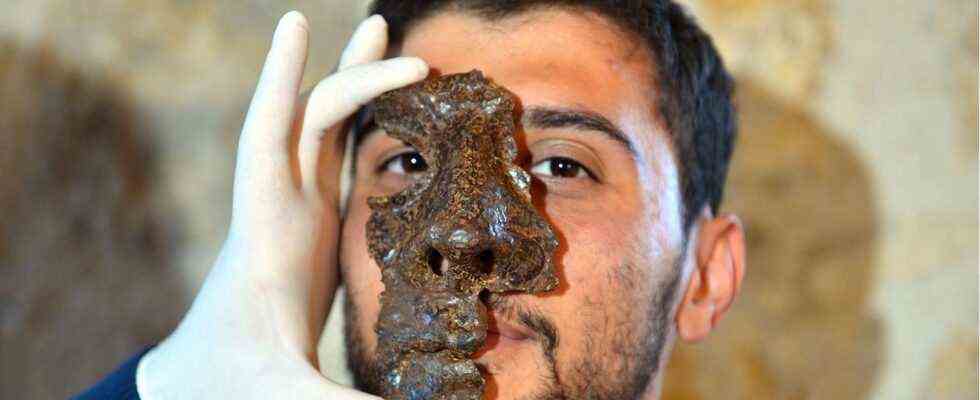archeology
Cult mask of a Roman rider found in Turkey
The fragment only gives a rough impression of the effect of these masks.
© PR
Roman cavalrymen wore bells and eerie masks that covered their faces. The fragment of such a mask was excavated in Hadrianopolis.
During excavations near the ancient city of Hadrianopolis, a team from Karabük University unearthed a large fragment of a face mask. These types of masks were only worn by the Roman cavalry in late antiquity. The fragment probably dates from the 3rd century AD.
The historian Arrian of Nicomedia wrote that the Roman cavalry wore these masks when marching and participating in tournaments called hippika gymnasia. These tournaments combined entertainment and equestrian stunts with military exercises. Mock battles between the soldiers were also demonstrated. Masks made of iron or bronze were attached under the helmets. The surface was coated with gold or silver and polished. It completely covered the soldier’s face and gave the rider a supernatural appearance. The mask also included a bell. In addition to the radiant mask, the rider’s movements were accompanied by their bells. Mostly the face of a young man is depicted, but there were also masks with women’s faces. In principle, it also protected the face, but the recesses for the eyes would have to have narrowed the field of vision in battle. The Roman historian Lucius Flavius Arrianus therefore wrote that the masks were not worn in combat, or at least that was not their original purpose. This also indicates that the masks were put on the dead.
Horsemen were considered an auxiliary force
Roman warfare relied on the legions’ foot soldiers. The cavalry was considered an auxiliary force, but it always had a meaning. The cavalry could not be used directly against a legion. Disciplined foot soldiers could repel a frontal attack as long as they held formation. The situation was different with flank or containment attacks. The cavalrymen were mostly recruited from “barbaric” tribes – for example from Germania. In the course of time, however, the importance of the cavalry increased.
The excavation of the fragment leads the researchers to suspect that horsemen were permanently stationed at the excavation site, which also contains the remains of a fortified building. Hadrianopolis is located in the northern Turkish province of Karabük. At that time the place was on the eastern edge of the Roman Empire. The city was founded by Roman Emperor Hadrian. “Rome was planning to defend its borders,” said the researchers. “The aim of building bases was to ward off all kinds of dangers that could emanate from the Black Sea region. We believe that Hadrianopolis was one of those defensive military cities.”
Source:History Net




